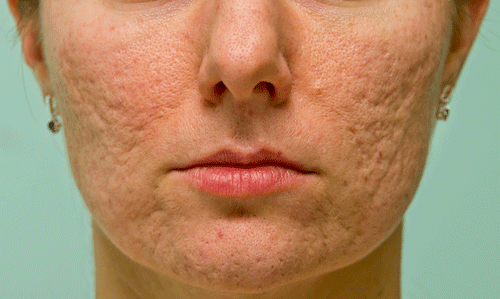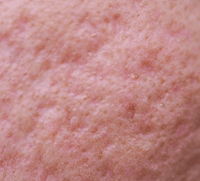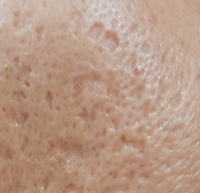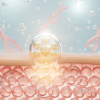Causes of Acne Scars:
Acne scarring results as a side effect of a severe inflammatory process. Inflammation from acne reaches deep into the dermal layers of the skin. When the healing process is excessive and prolonged, especially in susceptible patients, loss of collagen occurs along with the formation of scar tissue. This is seen on the skin often as depressed acne scars.
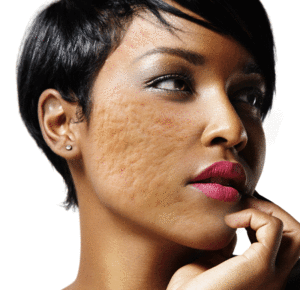
Picking of the acne lesion can also contribute to scarring. Delaying treatment of inflamed acne until it becomes severe can lead to extensive scarring. This is especially true in persons with cystic acne.
Types of depressed (atrophic) acne scars
There are 4 main types of acne scars.
Rolling Scars – These gentle rolling scars are wider than they are deep. These are the best responders to medical microneedling and deeper chemical peels.
Boxcar Scars – These rounded scars have sharper edges, and have the appearance of being punched out of the skin. These are often seen on the cheeks and temples. These are the next best responders to professional microneedling & peels.
Icepick Scar – These are small, deep and sharp scars. They extend deep into the skin, and are difficult to improve.
You can also get a raised acne scar similar to a keloid, but these are not as common.
Most people, though, will present with a mixture of these types. This means that some facial areas are likely to respond better to treatment than others.
Rolling Scars Boxcar Scars Ice Pick Scars Mixed Scars

Prevention of acne scars
Prevention aims at minimizing the severity and length of inflammation. Patients should be treated as soon as possible, and as young as possible, especially those with a genetic predisposition to scarring.
Nodular and cystic acne lesions that extend deeper into the skin are more likely to result in scarring.
Severe acne that begins in the early teens is serious, and more likely to result in scarring. Controlling the severity of acne with chemical peels, medical-microneedling, prescription skin care products, prescription medications such as Accutane & and medical topical acne-ceuticals should be instituted in a systematic and timely manner.
Patients should also be instructed to avoid picking their acne at home, and also to use ice treatments for approximately 10 minutes a day to reduce inflammation.
Read Part 2 – Treatments for Acne Scars


